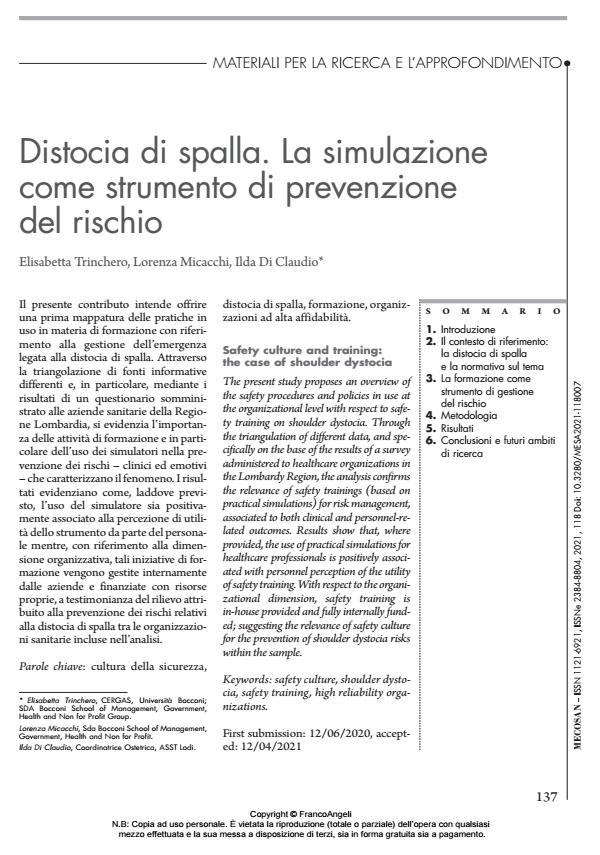Safety culture and training: the case of shoulder dystocia
Journal title MECOSAN
Author/s Elisabetta Trinchero, Lorenza Micacchi, Ilda Di Claudio
Publishing Year 2021 Issue 2021/118
Language Italian Pages 16 P. 137-152 File size 251 KB
DOI 10.3280/MESA2021-118007
DOI is like a bar code for intellectual property: to have more infomation
click here
Below, you can see the article first page
If you want to buy this article in PDF format, you can do it, following the instructions to buy download credits

FrancoAngeli is member of Publishers International Linking Association, Inc (PILA), a not-for-profit association which run the CrossRef service enabling links to and from online scholarly content.
The present study proposes an overview of the safety procedures and policies in use at the organizational level with respect to safety training on shoulder dystocia. Through the triangulation of different data, and specifically on the base of the results of a survey administered to healthcare organizations in the Lombardy Region, the analysis confirms the relevance of safety trainings (based on practical simulations) for risk management, associated to both clinical and personnel-related outcomes. Results show that, where provided, the use of practical simulations for healthcare professionals is positively associated with personnel perception of the utility of safety training. With respect to the organizational dimension, safety training is in-house provided and fully internally funded; suggesting the relevance of safety culture for the prevention of shoulder dystocia risks within the sample.
Keywords: safety culture, shoulder dystocia, safety training, high reliability organizations.
Elisabetta Trinchero, Lorenza Micacchi, Ilda Di Claudio, Distocia di spalla. La simulazione come strumento di prevenzione del rischio in "MECOSAN" 118/2021, pp 137-152, DOI: 10.3280/MESA2021-118007